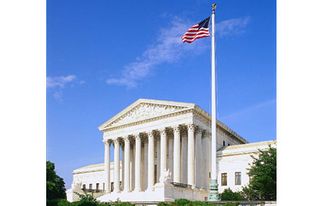By Dora Lane
Employers may not request a family medical history from employees or applicants, even as part of a post-offer medical examination. In its first lawsuit alleging a violation of the Genetic Information Nondiscrimination Act (GINA), the Equal Employment Opportunity Commission (EEOC) sued an employer whose contracted medical examiner required applicants to complete a family medical history questionnaire. EEOC v. Fabricut, Inc., No. 13-cv-248 (N.D. Okla. filed May 7, 2013). Review of this case offers a timely opportunity for employers to review their employment practices for compliance with GINA.
Investigation of ADA Claim Finds Illegal Family Medical History
Temporary employee, Rhonda Jones, worked for Fabricut, a distributor of decorative fabrics, as a memo clerk for 90 days. She then applied to work in the same position as a regular employee. Fabricut made her an offer of employment, contingent on the results of a pre-employment drug test and physical. Fabricut sent Jones to Knox Laboratory, a medical examining facility that provided examination services to Fabricut on a contract basis. As part of the process, Knox Laboratory instructed Jones to complete a questionnaire that asked about the existence of heart disease, hypertension, cancer, tuberculosis, diabetes, arthritis and mental disorders in her family.
The examiner conducting Jones’ pre-employment physical concluded that Jones may be predisposed to or already suffer from carpal tunnel syndrome and recommended further evaluation. Although Jones’ personal physician conducted a battery of tests and concluded that she did not have carpal tunnel syndrome, Fabricut withdrew its offer of employment. Jones filed a discrimination charge with the EEOC alleging a violation of the Americans with Disabilities Act (ADA) on grounds that she was denied employment because Fabricut regarded her as having a disability, carpal tunnel syndrome.
As part of its investigation of Jones’ ADA claim, the EEOC obtained from Fabricut copies of Jones’ post-offer, pre-employment medical examination. The records revealed the family medical history questionnaire that Jones had been instructed to complete at the start of her pre-employment physical. Finding that the questionnaire included unlawful inquiries into genetic information, the EEOC notified Fabricut that its investigation would look into its compliance with GINA regarding its solicitation of family medical histories of applicants.
EEOC Pursues GINA Lawsuit
The EEOC filed suit against Fabricut in federal court alleging violations of both the ADA and GINA. GINA, which took effect in 2009, makes it illegal for employers to discriminate against employees or applicants because of genetic information, which includes family medical history, and restricts employers from requesting, requiring or purchasing such information, among other things. The lawsuit alleges that Fabricut violated GINA by requesting and requiring Jones and other applicants to indicate whether or not they had a family medical history for a variety of diseases and disorders as part of its post-offer, pre-employment medical examination as conducted for Fabricut by its agent, Knox Laboratory, who then provided the information to Fabricut for its use in hiring and employment decisions.
Lawsuit Settled for $50,000 and Additional Relief
Without admitting any violation of law, Fabricut agreed to settle the case for payment of $50,000 to Jones as compensatory damages. The settlement also requires Fabricut to post notices in its workplace stating that Fabricut will comply with all federal employment laws, including the ADA and GINA, conduct two hours of live training for all management and human resources personnel, create or revise personnel policies prohibiting discrimination and be subject to monitoring and reporting requirements for two years.
Review Practices for GINA Compliance
Although GINA has been in effect since 2009, many employers may not be familiar with its requirements and prohibitions. What may have been routine employment practices in past years, such as collecting a family medical history from employees or applicants, may now be unlawful under GINA. Employers should review their job applications, interview questions and any employment medical testing practices to ensure that no family medical history is requested. The regulations implementing GINA specifically state that a covered entity must tell health care providers not to collect genetic information, including family medical history, as part of a medical examination used to determine an individual’s ability to perform a job. 29 C.F.R. § 1635.8(d). In addition, if an employer finds out that family medical histories are being collected, it must take reasonable measures, including not using the health care provider, to prevent the information from being collected in the future.
Under certain circumstances, employers may receive genetic information that it did not request. Such inadvertent acquisition of genetic information is not a violation of GINA. To help establish that genetic information was acquired inadvertently, employers should take advantage of a safe harbor provision in the GINA regulations. When an employer needs to request health-related information, such as to support a request for sick leave or a reasonable accommodation under the ADA, the employer should warn the employee and the health care provider not to provide genetic information. The regulations suggest the following language to accompany the request for health-related information:
The Genetic Information Nondiscrimination Act of 2008 (GINA) prohibits employers and other entities covered by GINA Title II from requesting or requiring genetic information of an individual or family member of the individual, except as specifically allowed by this law. To comply with this law, we are asking that you not provide any genetic information when responding to this request for medical information. "Genetic information," as defined by GINA, includes an individual's family medical history, the results of an individual's or family member's genetic tests, the fact that an individual or an individual's family member sought or received genetic services, and genetic information of a fetus carried by an individual or an individual's family member or an embryo lawfully held by an individual or family member receiving assistive reproductive services.
When employers provide this warning, any resulting acquisition of genetic information will generally be considered inadvertent and therefore, not in violation of GINA.
Disclaimer: This article is designed to provide general information on pertinent legal topics. The statements made are provided for educational purposes only. They do not constitute legal advice and are not intended to create an attorney-client relationship between you and Holland & Hart LLP. If you have specific questions as to the application of the law to your activities, you should seek the advice of your legal counsel.





